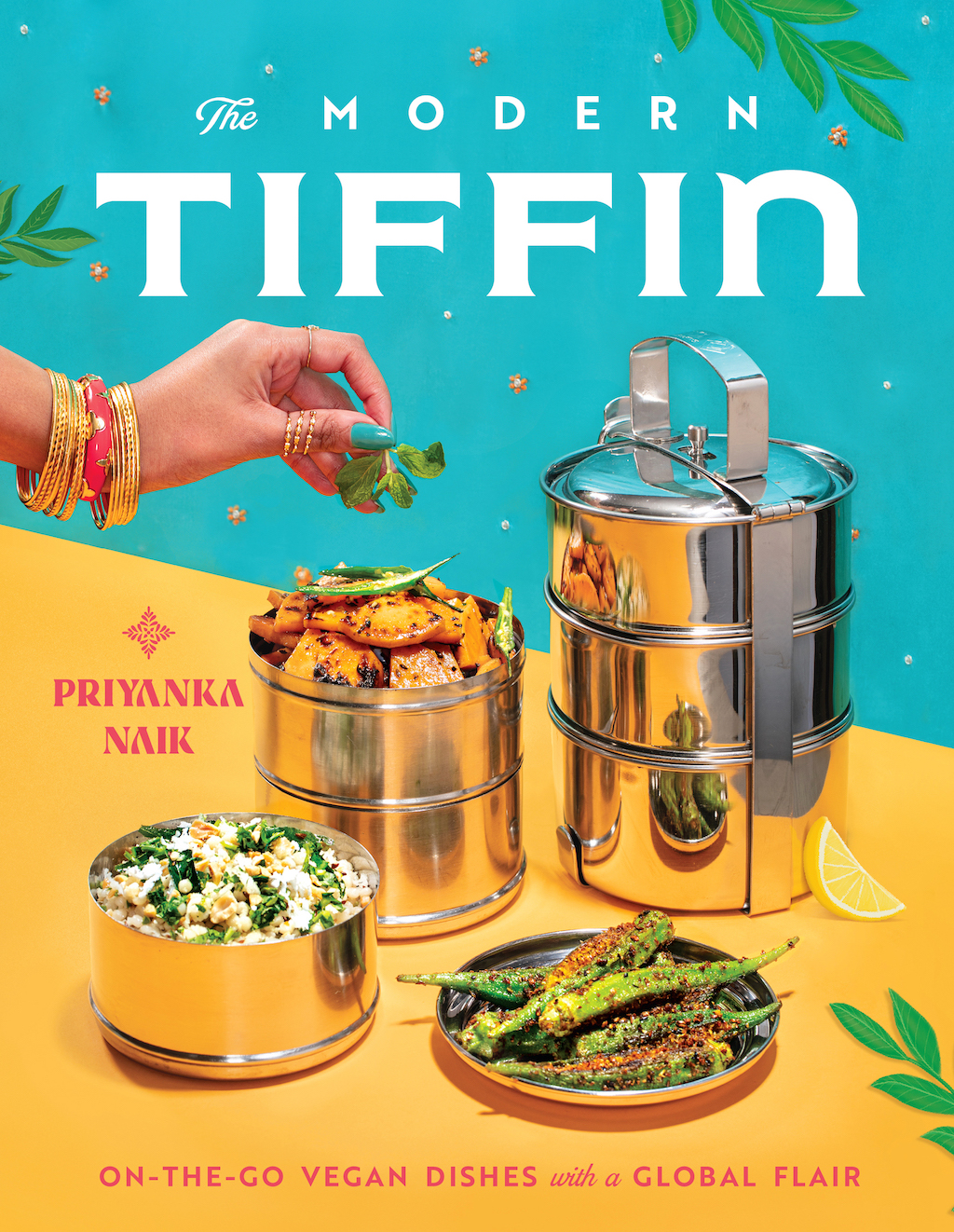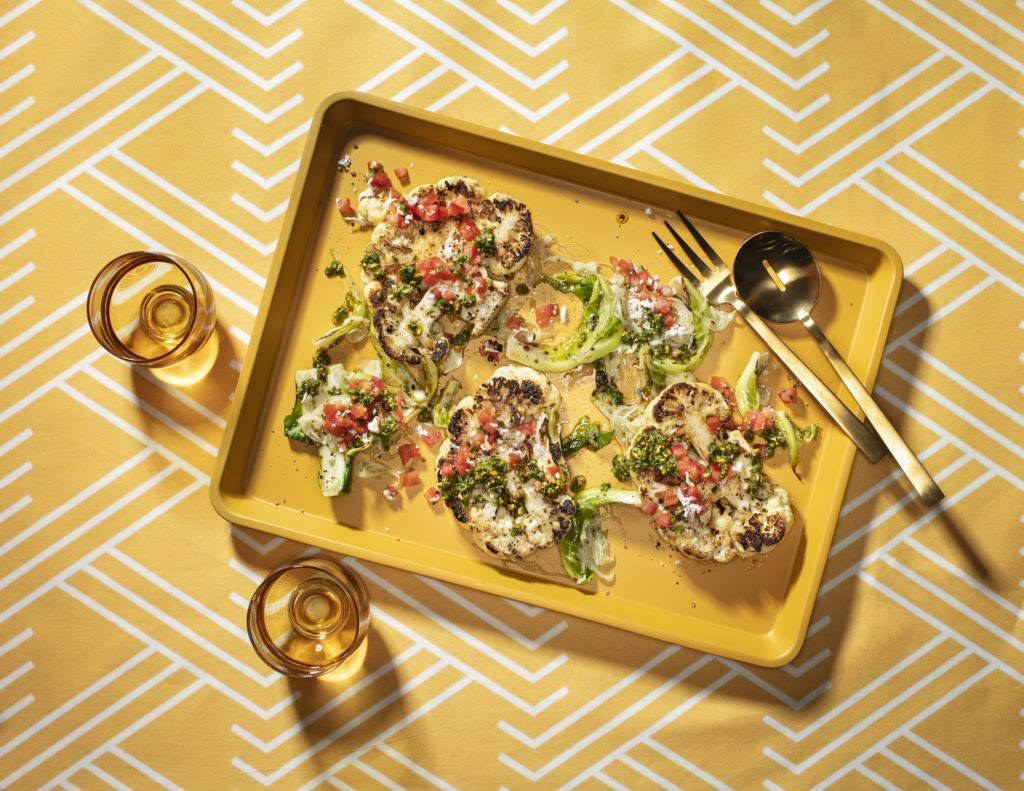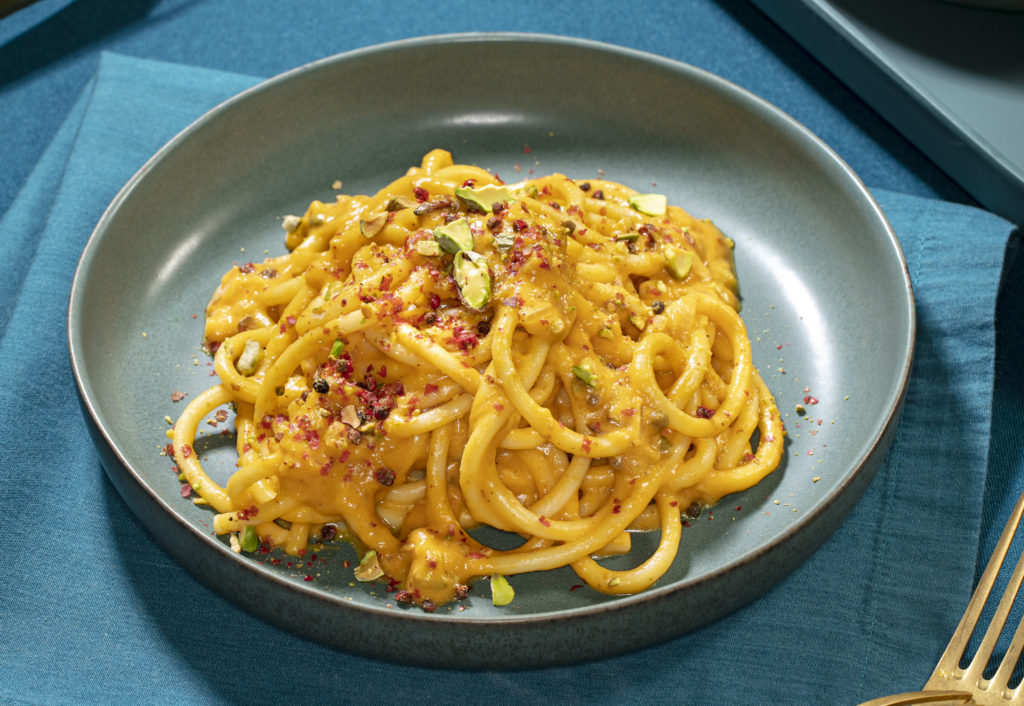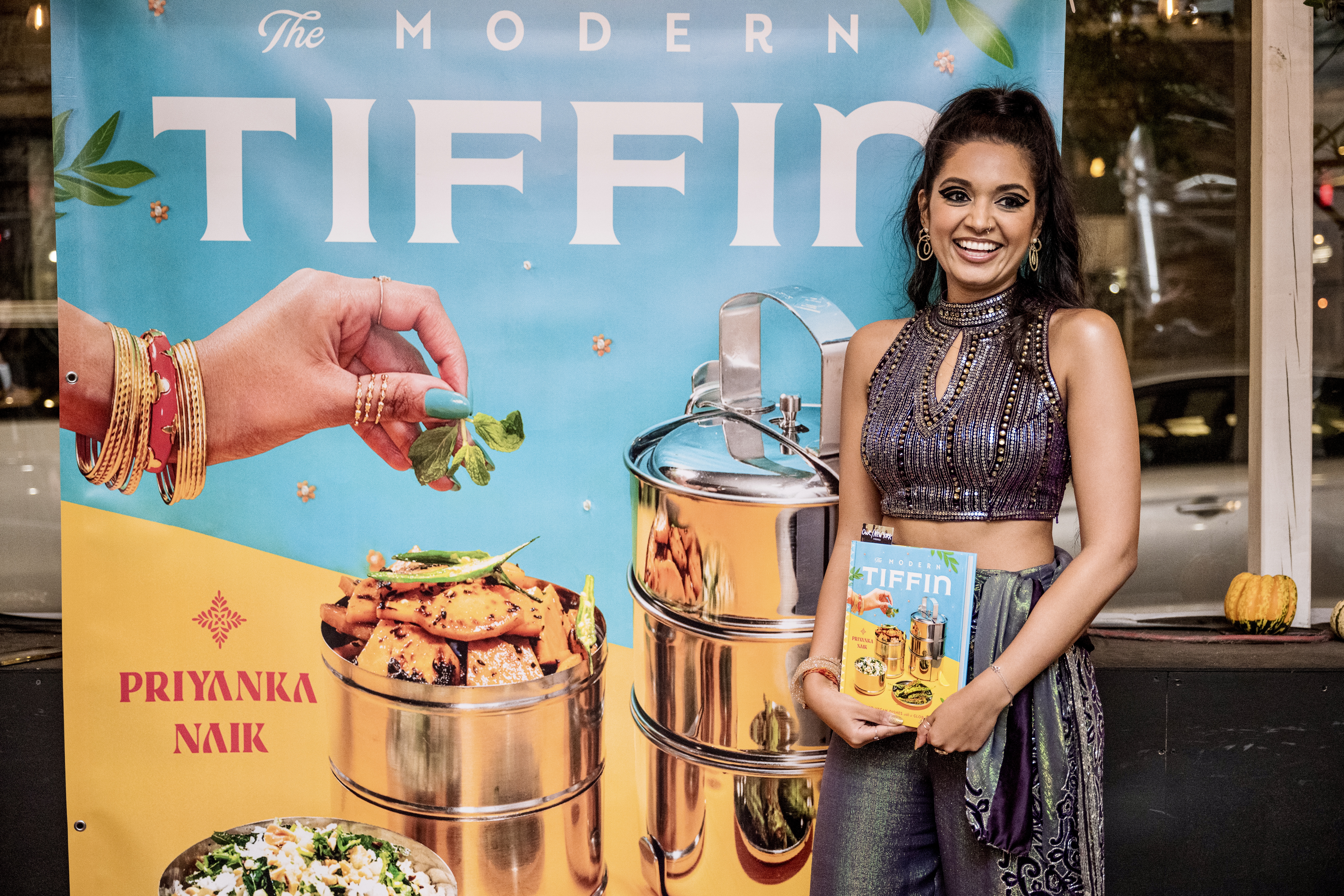Chef and Storyteller Priyanka Naik On Tiffins, Vegan South Indian Food, and Why Sustainable Traveling Matters
7 Mins Read
South-Indian-American Chef Priyanka Naik is a self-taught vegan cook with a popular cooking blog. Her authenticity in representing Indian culture through food, colour and travel has earned her a glut of fans, celebrity status in the foodie world and a book deal. Her just released cookbook The Modern Tiffin: On-The-Go Vegan Dishes With Global Flair pay homage to a beloved food preparation tradition in the country of her roots: the humble tiffin (more on that below). From Bon Appetit to the Food Network to the Washington Post, the book has earned rave reviews across the board, so we got in touch with Naik to find out more.
In this interview, Naik opens up to Green Queen’s Sonalie Figueiras about her tiffin experiences, why she self-defines as vegan and how sustainability can play a role in both cooking and travel; her two major passions.
GQ: Let’s start with the basics: what’s a tiffin?
Funnily enough I have a whole section in the intro of The Modern Tiffin that outlines what a tiffin is! A tiffin is a steel stacked container set that is latched and allows for food to be made portable. It is a 130+-year-old tradition in India and is the most popular way to transport food to and from the office for lunchtime.
To an Indian cook/eater, a tiffin represents a piece of home, a fresh-made meal, and alignment to tradition. It enables traditional Indian food like daals, vegetable dishes, rice/roti to be transported without compromising their integrity. All of my recipes in The Modern Tiffin can be made portable and placed into a tiffin because I grew up as a first-generation Indian American taking my Indian-inspired lunches that my mom made every day to school and even packed my lunch every day to work once I entered the workforce after college. So the concept of tiffins has played a strong role in my life and I look to pass that tradition and importance of cooking for oneself, onto others.

GQ: What made you embrace veganism?
PN: I grew up vegetarian and in fact, most of our cooking at home is vegan by default (we are Maharashtrian). I only began eating chicken and seafood in my adolescent years because options for vegetarian food were so limited in the ’90s in NYC. I went back to being fully vegetarian about 15 years ago – for animal and environmental reasons (I am a huge animal lover). And I evolved into cooking and eating all vegan about four years ago.
I cook and eat all vegan (and live sustainably, cruelty-free), because I truly believe every being should be treated as we want to be treated – with respect and compassion. And I want to help improve the longevity of our planet as much as I can. I say vegan and not plant-based, because I do not cook with any animal-derived ingredients and many times, plant-based can be vegetarian, so I would rather there be no confusion!

GQ: How did you get into food and when did you realize you wanted to write a book?
PN: I’ve been cooking since a very young age and had an interest in it since I was a baby. I am the youngest in my family, so I would always be in the kitchen with my Maa (probably because she had to keep an eye on me) and I learned through observation. My mom and dad are both excellent and knowledgeable cooks and my mom would consistently involve me and my sisters in the cooking process. I am self-taught and that decision was intentional.
I’ve wanted to write a cookbook for a long time – probably since I started my cooking blog back in 2011. I think I am a storyteller at the core, in addition to being a cook. And writing is my way of conveying emotion and passion.
GQ: More and more people are interested in regional and local cuisines lately. It’s not just Thai, it’s Ishaan and it’s not just Mexican now, it’s Oaxacan. Do you see this happening around you? Why do you think this is happening?
PN: To be honest – it’s not happening enough for Indian cuisine in the U.S. Most food here is referred to as “Indian food” or “Mexican food,” which is why I wanted The Modern Tiffin to include elements not only of my specific regional culture – Maharashtrian and South Indian – but of my global perspective because I’ve traveled to nearly 40 countries in my life. I believe that learning about foods and agriculture from around the world is the best way to learn about global cultures, various traditions and to understand the world.
GQ: What are some of your weekly must-make recipes from the book?
PN: Bucatini a la Pumpkin with Pink Peppercorn & Pistachios, Spice-Rubbed Cauliflower with Pistachio & Cilantro Gremolata and Tofu 65.

What’s been the feedback/response to the book so far?
It’s been a great response all around including from fellow chefs like Bryant Terry, James Beard Award-Winning Chef and Author of Vegetable Kingdom and Black Food who writes: “I met Priyanka when she was just starting to build her career in the food world. I was immediately impressed with her passion for sharing meals with others, her enthusiasm for celebrating foods from various cultures around the globe, and her commitment to sustainability. Having tasted some of Priyanka’s food, I know she is capable of sharing delicious, healthy, and easy-to-make recipes with the world.”
Readers are equally enthusiastic, with one saying: “This colorful and fun cookbook features unique global vegan recipes with an Indian twist. Get ready to wow your taste buds with interesting flavor and ingredient combinations. The recipes are easy to follow along with and are paired with beautiful photography and illustrations” and another exclaiming: “WOW! Not only is this book beautiful to display on my coffee table, it is FULL of recipes I am excited to create! The colorful artwork and photography just screams “Happy!”, “Creative!”, “Delicious!”. After reading the introduction, I can hear Priyanka’s voice in my head , explaining her passion for building each meal. I love that she included a lot of background and details to make it a compelling read.”
GQ: You love to travel, and that has inspired many of the recipes in this book. Post Covid and given the current climate crisis, what’s your take on traveling going forward? Is it responsible to travel given what we know about emissions and planetary cost?
PN: I definitely want to get back to traveling internationally once it’s safer to do so. I certainly think we have a long ways to go in improving long-distance mass travel in respect to emissions and planetary cost – but a lot of airlines are investing more in developing sustainable flying technologies. And one interesting statistic that I learned recently is that ditching meat for a year saves the equivalent CO2 as flying 4,000 miles. But in order for me to learn, gather information and help educate others, I need to make some sacrifices. So for me personally, my daily habits like living a vegan life, reducing waste, composting, wearing only sustainable fashion, not owning a car – are huge contributing factors to helping our environment.
My one sacrifice is airline travel because it is my only way to learn, discover and gather information to help educate others that don’t necessarily have that opportunity. Plus, outside of airline travel there are a lot of other sustainable innovations like ships which can be carbon neutral. So the innovation is happening, it just needs to happen faster.
GQ: As a home cook, what are some of the ways you try to make cooking more sustainable?
PN: Freezing scraps and composting them at a local farmers market in NYC. I only buy enough groceries for what I need, so not buying in excess; reusing all leftovers to minimise food wastage; buying local; buying produce only in season and using compostable dishware.
GQ: What are some of your must-have ingredients in your pantry/fridge?
PN: Fresh garlic, green chilies, chili powder, fresh coriander, cumin seeds, turmeric, plant milk and bread (I am a breaditarian). Also, dark chocolate, assorted unsalted nuts, dried legumes, dried pasta, an assortment of whole dried spices (come on, I’m Indian), vegan butter, olive oil and grapeseed oil.
The Modern Tiffin: On-the-Go Vegan Dishes with a Global Flair (A Cookbook) by Priyanka Naik is published by Simon & Shuster ($19.99) – it is available at all good bookstores and via Amazon.
All images courtesy of Priyanka Naik.




